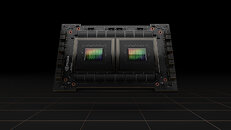
Tesla to Patch 130,000 Cars with AMD Ryzen APUs Due to Overheating
One of the electric vehicle driving forces in the car market, Tesla, has today announced that the company would have to issue a soft recall of a few select car models over an issue with overheating. The affected vehicles are Tesla Model 3 2022, Tesla Model S 2021-2022, Tesla Model X 2021-2022, and Tesla Model Y 2022. Tesla's infotainment system is powered by AMD Ryzen APUs, replacing the Intel Atom CPUs found in the previous models. With Ryzen APUs overheating, the infotainment system can lag or restart and sometimes cause it to get completely turned off. The problem is that the car's liquid cooling will prioritize cooling the batteries instead of the processor, causing it to overheat. Tesla issued a soft recall on these models, meaning that a regular firmware update will fix this issue.
TeslaTesla, Inc. (Tesla) is recalling certain 2021-2022 Model S, Model X, and 2022 Model 3 and Model Y vehicles operating certain firmware releases. The infotainment central processing unit (CPU) may overheat during the preparation or process of fast-charging, causing the CPU to lag or restart. A lagging or restarting CPU may prevent the center screen from displaying the rearview camera image, gear selection, windshield visibility control settings, and warning lights, increasing the risk of a crash. Tesla will perform an over-the-air (OTA) software update that will improve CPU temperature management, free of charge. Owner notification letters are expected to be mailed July 1, 2022. Owners may contact Tesla customer service at 1-877-798-3752. Tesla's number for this recall is SB-22-00-009.





















































